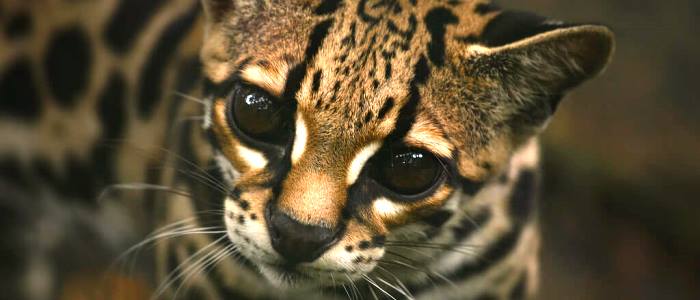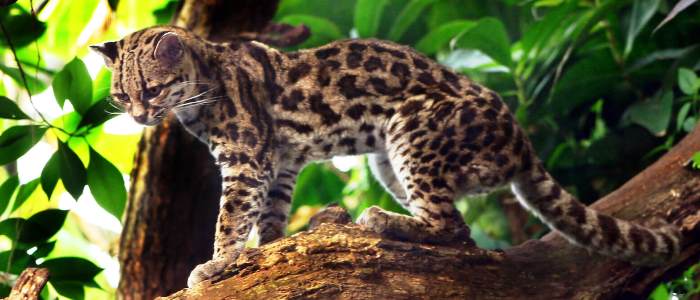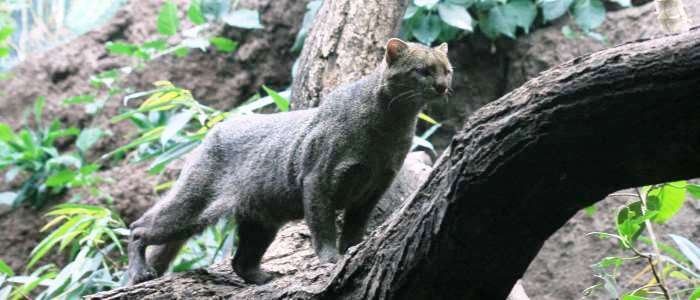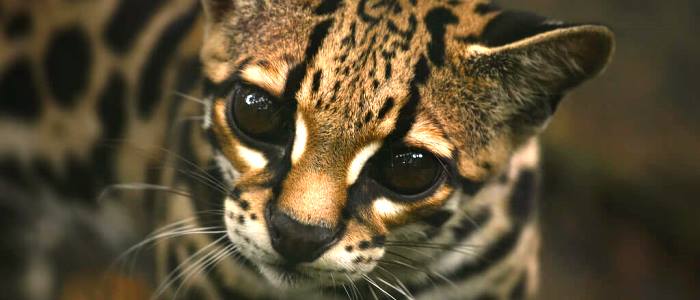Costa Rica hosts 6 different types of wild felines in its territory, which are noticed in the Americas for their colors and beauty, makes them without a doubt one of the highest points of our country in themes of fauna and diversity. In this blog we will talk about the different species of Felines of Costa Rica that will never go unnoticed in these beautiful tropical lands.
Jaguar: (Panthera Onca)
The jaguar is the largest feline found in the Americas, with a size of 2 meters and an approximate weight of 90 kilos, this friend is a born predator, making him possessor of the strongest bite that can be among the cats in the entire world. Its extension goes from Mexico to the north of Argentina, the jaguar is a normally solitary and very territorial animal, it can dominate large extensions of land, but due to the deforestation in previous years, its habitat began to be lost little by little and has endangered its existence in Costa Rican territory, due to their beautiful skin. These animals are also sold in different countries where governments allow them as pets, however, the efforts of conservation have made its population grow again and for the moment the places where most of them reside are the Santa Rosa National Park, mountains of Talamanca, Tortuguero National Park and Corcovado National Park, where not very rarely some local guides come to see them. Jaguars easily adapt to different climates and that’s why you can find them close to the mountains and the coasts.
Their favorite prey are peccaries, deer, monkeys, reptiles and fish, despite being carnivorous animals and poachers. They kill the preys attacking them directly to the throat, and despite Jaguars are carnivores, they do not usually attack humans. Their gestation period takes approximately 3 months and a week and can have 1 to 3 jaguars. Their life expectancy is 15 to 17 years. The Jaguars are considered by most people the most beautiful of the Felines of Costa Rica.

Puma: (Panthera Concolor)
The Puma is largest feline on the continent along with the Jaguar, they have the same size basically, but the Jaguar is stronger. Pumas can be found from the lands of Yukon in Canada to the south of the Andes, they are nocturnal and diurnal. As they are not as strong as Jaguars, pumas try not to interact much to avoid friction that can take them to death. This cute feline is usually found near the lands of the Santa Rosa National Park and the Guanacaste National Park, quite dry and hot areas, but it is easy for them to adapt to the different zones with micro climates found in the country and it is the animal with the highest rank in the continent.
Because Guanacaste is the most popular location for this animal in Costa Rica, its preferred prey is usually the white-tailed deer but they also usually hunt small reptiles and other birds, they are very agile going onto the trees and can live until 20 years, their gestation period goes from 90 to 96 days and can have up to 5 little babies.

Ocelot: (Leopardus pardalis)
It is the third largest feline found in Costa Rican territory, usually measuring from head and tail 1.5 meters and weighing between 25 and 35 pounds. These felines adapt very easily to any type of terrain or climate, it could be rainy or desert climate, they have no problem even living near areas altered by man and they are found from Southern United States, to the south of the continent near Argentinean lands.
These beautiful animals tend to be mostly nocturnal, they have a very strong sense of sight and smell that makes them natural hunters. Besides, they are quite agile as their size and weight helps them to mobilize greatly, allowing them to be able to jump more than 2.5 meters high and 4 meters to the sides when they require it. They can live close to 20 years and among their favorite prey are monkeys, iguanas, turtles, fish and snakes and are usually also hunted by Jaguars, who by its size cannot give battle to them, Jaguar also try to reduce the competition between them and normally kill ocelots too, as they are easy to kill comparing them with the size of Jaguars.

Margay: (Leopardus weidii)
Called as a tree ocelot, the Margay or Caucel has the same 36 chromosomes as ocelots and the tiger cats (Oncillas), which makes them very close cousins. It is one of the least studied cats in Costa Rica because they are very shy of human presence and when they notice any human contact, they almost flee immediately, so the scientific community has had a hard time tracking them to study more thoroughly iis behavior.
It can be said that it is the most endangered feline in Central America since its lifestyle is very arboreal, which makes it more susceptible when we speak in terms of deforestation, since its habitat has been seriously affected for several decades due to uncontrolled deforestation, but thanks to the efforts of several entities, both private and public, today they have more protection and their territories are not as threatened as years ago.
They live around 12 to 15 years and their diet is very similar to that of the other wild Felines of Costa Rica. The vast majority of them are nocturnal, their gestation period ranges from 76 to 84 days and they have 1 to 2 cats.

Oncilla: (Leopardus tigrinus)
It has a smaller size than an average domestic cat, and normally lives in slightly altered forests between 600 to 4300 meters above sea level, this nice friend is mostly nocturnal and difficult to see, however they have been returned and have been observed near the mountains of Coronado in San Jose, which is an excellent sign and it clarifies that they are recovering land that some years ago was lost.
It is usually seen mostly in Central America and South America and 4 sub species are known, and although they are terrestrial animals, it is like their cousin the Margay, an excellent climber and used to hang around the trees. Being a feline, it is a 100% carnivorous animal, weighing between 2 and 3 kilograms and feeding on mice, iguanas, birds, monkeys, etc. They have a life expectancy of 17 years, while in captivity it is known that they have lived more than 20 years and their gestation period goes from 74 to 80 days and give birth 1 to 2 pups. The Oncilla is considered by most people as the cutest of the Felines of Costa Rica.

Jaguarundi: (Puma yagouaroundi)
Direct relative of the cougar (puma), the only feline in Costa Rican territory that is completely diurnal, is one of the most unusual cats despite their daytime nature, they have an elongated body with short legs and body of a single color, in reality it resembles more a weasel than a feline and normally lives near the water currents in low and high areas. Their diet is just like the other quite varied cats, reptiles, frogs, land birds and small mammals. It has a length of 70 centimeters and can weigh up to 7 kilos.
It has a fairly large extension in the American continent, lives from Mexico to Argentina, has different names in the countries where it lives, and unfortunately for deforestation it is an species that is endangered like the other wild felines, but the numbers are recovering thanks to conservation efforts. Its gestation period ranges from 70 to 77 days, they can give birth between 2 to 4 pups and its life expectancy is 15 years.


